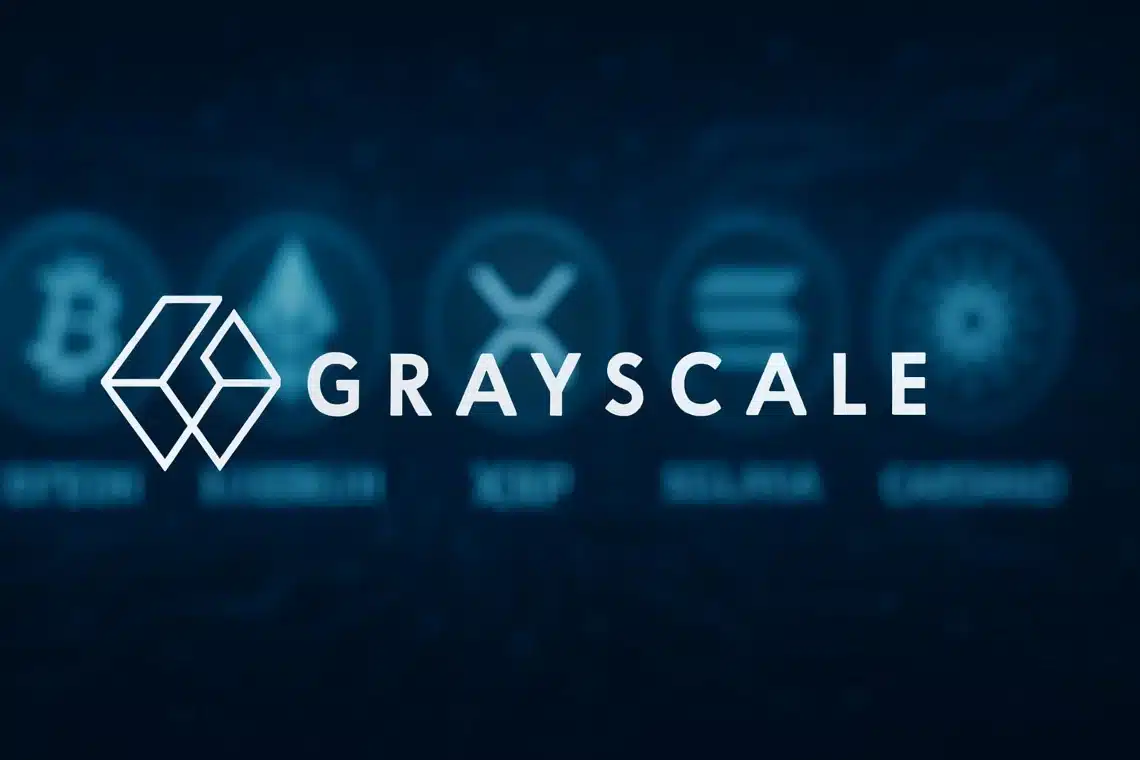- Grayscale’s XRP Trust has officially converted into a fully regulated spot ETF (GXRP) and begins trading today.
- The ETF structure removes the old trust’s liquidity friction, allowing easier access for institutions that couldn’t previously hold native XRP.
- GXRP creates a regulated bridge between traditional markets and on-chain XRP liquidity, signaling a major step in XRP’s institutional adoption.
The Grayscale XRP Trust ETF (GXRP) has officially been approved for listing on NYSE Arca, with trading scheduled to begin today, November 24. The fund is a spot ETF, meaning it is backed by actual XRP holdings rather than futures or synthetic exposure.
GXRP represents a conversion of the long-running Grayscale XRP Trust into a fully regulated exchange-traded product registered under the Securities Exchange Act of 1934. Crypto commentator Pumpius described the development as “huge for XRP,” outlining several structural advantages that could reshape XRP’s liquidity profile and institutional adoption.
Spot ETF Structure Requires Real XRP in Custody
Unlike derivatives-based products, GXRP must hold real XRP to back each share. This mirrors the structure of spot Bitcoin ETFs and introduces continuous arbitrage flow between the ETF and spot markets.
Authorized participants are able to create or redeem ETF shares depending on market conditions. If GXRP trades at a premium, APs acquire spot XRP from exchanges or OTC desks, deliver it into the trust, and mint new shares.
If it trades at a discount, the process reverses. This mechanism forces genuine XRP inflows or outflows and can channel substantial amounts of XRP into regulated custody as institutional interest grows. Over time, Pumpius argues, this design could be transformative for XRP’s underlying liquidity.
Conversion From Trust Removes Old Liquidity Friction
Before conversion, the Grayscale XRP Trust operated as a closed-end product with limited liquidity and frequent discounts or premiums relative to its net asset value. The shift to a fully redeemable ETF dramatically changes that dynamic.
🚨Grayscale just turned the XRP liquidity game up several levels!
The Grayscale XRP Trust ETF [GXRP] has been approved for listing on NYSE Arca, with trading set to begin Monday. This is a spot ETF that actually holds XRP, converted from the existing Grayscale XRP Trust and… pic.twitter.com/qyevhYI2ho
— Pumpius (@pumpius) November 22, 2025
GXRP’s listing on NYSE Arca enables intraday creations, redemptions, and far tighter trading spreads.
It also allows banks, hedge funds, and RIAs, particularly those restricted from holding native crypto assets, to efficiently gain XRP exposure without dealing with custody or wallet infrastructure. This resolves what Pumpius called the “liquidity drag” that hindered the old trust structure.
Regulated Rails Open the Door for Major Allocators
GXRP now lives within the same ETF infrastructure that supports trillions of dollars in equities, commodities, and fixed income products. For large institutions, this means the XRP ETF sits inside a familiar operational and compliance environment.
Custody is handled by regulated entities, the product is SEC-registered, and its integration with standard portfolio management tools removes operational risk barriers that previously prevented institutions from engaging with XRP directly.
For many allocators, adopting GXRP becomes as simple as adding a new ticker symbol.
Arbitrage Loop Links Traditional Markets With XRP On-Chain Liquidity
A key side effect of spot ETF mechanics is the real-time connection between on-chain XRP markets and traditional financial infrastructure. As GXRP premiums or discounts appear, arbitrage flows compel market makers to tap into exchanges and OTC liquidity, deepening XRP’s spot markets and smoothing pricing across venues.
According to Pumpius, this process can reduce volatility spikes, tighten spreads, and strengthen liquidity conditions across the broader ecosystem.
A Major Signal for XRP’s Expanding Institutional Stack
GXRP’s approval arrives alongside new products from other high-profile issuers, including a DOGE ETF and an XRP ETF from Franklin Templeton. The convergence of multiple regulated issuers building XRP products suggests increasing institutional comfort and confidence in the asset’s durability.
Combined with expanding custody options, lending pilots, and new institutional settlement corridors, the ETF launches signal that XRP is evolving from a niche digital asset into a programmable liquidity layer integrated with traditional finance.
A Gateway Into Global Capital Pools
Pumpius summarized the moment in stark terms: XRP now has a regulated, compliant bridge into the world’s largest capital markets, backed by creation–redemption flows that tie ETF activity directly into real XRP markets.
“This is the moment XRP stops knocking on the door of Wall Street,” he wrote. “It starts trading from inside the building.”
Also Read: 1,800,000,000 XRP Makes $1.75 a Key Area, Here’s Why

